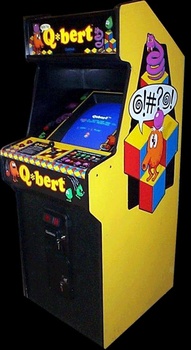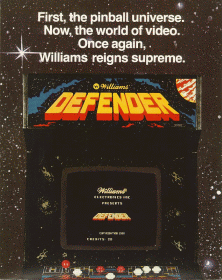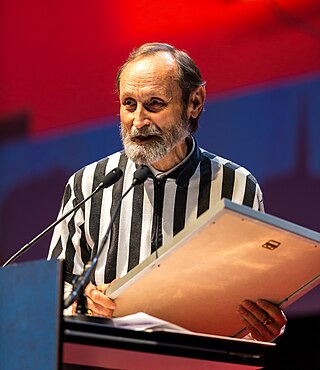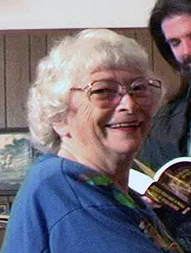Related Research Articles

Missile Command is a 1980 shoot 'em up arcade video game developed and published by Atari, Inc. and licensed to Sega for Japanese and European releases. It was designed by Dave Theurer, who also designed Atari's vector graphics game Tempest from the same year. The game was released during the Cold War, and the player uses a trackball to defend six cities from intercontinental ballistic missiles by launching anti-ballistic missiles from three bases.

Ivan Lendl is a Czech-American former professional tennis player. He is widely regarded as one of the greatest tennis players of all time. Lendl was ranked world No. 1 in singles for a then-record 270 weeks and won 94 singles titles. He won eight major singles titles and was runner-up 11 times, making him the first man to contest 19 major finals. Lendl also contested a record eight consecutive US Open finals, and won five year-end championships. Lendl is the only man in professional tennis history to have a match winning percentage of over 90% in five different years. He also had a comfortable head-to-head winning record against his biggest rivals, which translates to a 22–13 record against Jimmy Connors and a 21–15 record against John McEnroe. Lendl's dominance of his era was the most evident at the year-end championships, which feature the eight best-ranked singles players. He holds a win–loss record at the event of 39–10, having contested the final nine consecutive times, a record. Commonly referred to as the 'Father Of Modern Tennis' and 'The Father Of The Inside-Out Forehand', Lendl pioneered a new style of tennis; his game was built around his forehand, hit hard and with a heavy topspin, and his success is cited as a primary influence in popularizing the now-common playing style of aggressive baseline power tennis. After retirement, he became a tennis coach for several players; in particular, he helped Andy Murray win three major titles and reach the world No. 1 ranking.

Q*bert is an arcade video game developed and published for the North American market by Gottlieb in 1982. It is a 2D action game with puzzle elements that uses isometric graphics to create a pseudo-3D effect. The objective of each level in the game is to change every cube in a pyramid to a target color by making Q*bert, the on-screen character, hop on top of the cube while avoiding obstacles and enemies. Players use a joystick to control the character.

Defender is a horizontally scrolling shooter developed by Williams Electronics in 1980 and released as an arcade video game in 1981. The game is set on either an unnamed planet or city where the player must defeat waves of invading aliens while protecting astronauts. Development was led by Eugene Jarvis, a pinball programmer at Williams; Defender was Jarvis's first video game project and drew inspiration from Space Invaders and Asteroids. Defender was demonstrated in late 1980, before entering production in early 1981. It was distributed in Japan by Taito.

Track & Field, also known as Hyper Olympic in Japan and Europe, is an Olympic-themed sports video game developed by Konami and released as an arcade video game in 1983. The Japanese release sported an official license for the 1984 Summer Olympics. In Europe, the game was initially released under the Japanese title Hyper Olympic in 1983, before re-releasing under the US title Track & Field in early 1984.

Donkey Kong Jr. is a 1982 arcade platform game that was released by Nintendo. It is the sequel to Donkey Kong, but with the roles reversed compared to its predecessor: Mario is now the villain and Donkey Kong Jr. is trying to save his kidnapped father. It first released in arcades and, over the course of the decade, was released for a variety of home platforms. The game's title is written out as Donkey Kong Junior in the North American arcade version and various conversions to non-Nintendo systems.

Star Wars is a first-person rail shooter designed by Mike Hally and released as an arcade video game in 1983 by Atari, Inc. It uses 3D color vector graphics to simulate the assault on the Death Star from the 1977 film Star Wars. There are three connected gameplay sequences: combat against TIE fighters in space, flying across the surface of the Death Star, and the final trench run. The sequence repeats with added complications and the Death Star regenerating for each. The player's X-Wing fighter has a shield which only protects against damage a certain number of times, then the next hit ends the game. Speech synthesis emulates actors from the film.

The Rose Bowl is an outdoor athletic stadium located in Pasadena, California. Opened in October 1922, the stadium is recognized as a National Historic Landmark and a California Historic Civil Engineering landmark. At a modern capacity of an all-seated configuration at 96,400, the Rose Bowl is the 16th-largest stadium in the world, the 11th-largest stadium in the United States, and the 10th-largest NCAA stadium. The stadium is 10 miles (16 km) northeast of downtown Los Angeles.
Twin Galaxies is a social media platform and video game database. Twin Galaxies is the official supplier of video game records to Guinness World Records.

In games, score refers to an abstract quantity associated with a player or team. Score is usually measured in the abstract unit of points, and events in the game can raise or lower the score of different parties. Most games with score use it as a quantitative indicator of success in the game, and in competitive games, a goal is often made of attaining a better score than one's opponents in order to win.

Nibbler is an arcade snake maze video game released in 1982 by Chicago-based developer Rock-Ola. The player navigates a snake through an enclosed maze, consuming objects, and the length of the snake increases with each object consumed. The game was the first to include nine scoring digits, allowing players to surpass one billion points.
The U.S. National Video Game Team (USNVGT) was an American esports team in the early 1980s. It was founded in July 1983 in Ottumwa, Iowa, United States by Walter Day and Jim Riley as part of the Electronic Circus tour, with Steve Sanders as the first captain. After the Circus folded, Day re-established the team with himself as the captain, taking the team on a bus tour. The team challenged the players of arcades across the country and attempted to challenge other countries through visits to foreign embassies. In the years that followed the team ran numerous competitive contests.

Ľubomír Ftáčnik is a Slovak chess grandmaster and a former European Junior Champion.

Walter Aldro Day Jr. is an American businessman and the founder of Twin Galaxies, an organization that tracks world records for video games and conducts a program of electronic-gaming promotions.

Steven J. Wiebe is an American two-time world champion of the video game Donkey Kong, most recently holding the title from September 20, 2010, to January 10, 2011, with a high score of 1,064,500. Wiebe was the first person to achieve over a million points on Donkey Kong, with 1,006,600 on July 4, 2004. He is one of the primary subjects of the 2007 documentary The King of Kong: A Fistful of Quarters. Like his Donkey Kong rival Billy Mitchell, Wiebe was put in a Topps Allen & Ginter baseball set, which is featured in the 2009 edition of the baseball product.

Doris Self was an American video game competitor who gained recognition in the 1980s as "the world's oldest video game champion". In the 2007 Guinness World Records, Self was recognized as the world's oldest video game competitor. The documentary film The King of Kong: A Fistful of Quarters detailed Self's quest to recover her standing as the "oldest champion" from John Lawton, the 72-year-old co-founder of the Funspot Family Fun Center in Weirs Beach, New Hampshire, who had captured the world title on Depthcharge.
Todd Rogers is an American video game player who has been described as the first professional video game player. In 1986, he was invited to be part of the U.S. National Video Game Team. He had claimed to be recognized by Activision for having achieved many record-setting high scores, but many of his records were later disputed for a lack of verifying evidence or found to be impossible to achieve. In January 2018, the Twin Galaxies record database removed all of his scores from their leaderboards and banned him permanently, and Guinness World Records stripped his records.

David Nelson is an American arcade video game player who holds world record high scores listed in the 2008 Guinness World Records-Gamer's Edition.

William James Mitchell Jr. is an American video game player. He achieved fame throughout the 1980s and 1990s by claiming numerous records on classic video games, including a perfect score on Pac-Man. Twin Galaxies and Guinness World Records recognized Mitchell as the holder of several records earned playing classic video games, and he has appeared in several documentaries on competitive gaming and retrogaming. However, in 2017, the legitimacy of a number of his records was called into question, leading to Twin Galaxies stripping Mitchell of his records.

The Thompson Twins Adventure is a 1984 graphic adventure game that was distributed by Computer and Video Games magazine as a promotional 7" flexi disc "freebie" along with its October 1984 issue. The game is based on the Thompson Twins' single "Doctor! Doctor!", and features the Thompson Twins band members as the protagonists. The unusual storage format of the game showcases an experimental technique pioneered by the London-based Flexi Records label, and places the game alongside a small handful of other games distributed on grooved disks. This format never became established and The Thompson Twins Adventure is today valued more for its nostalgic and artifactual value than for its ludological aspects which have been uniformly panned by critics.
References
- ↑ "'86 Video Game Masters Tourney Set for June 27–29" (PDF). Cash Box. 50 (2): 34. June 28, 1986. Retrieved August 20, 2017.
- ↑ They're Masters of Video Games - Spokesman-Review, Spokane, WA - August 24, 1983 Archived December 8, 2007, at the Wayback Machine
- ↑ State Teams Tournament - Poster, August 24-28, 1983 Archived January 2, 2010, at the Wayback Machine
- ↑ U.S.Video Team Forming; Plans Call for Match with Japan - RePlay Magazine, October, 1983 [ dead link ]
- ↑ 1985 Video Game Masters Tournament - Computer entertainment Magazine, July, 1985
- 1 2 1985 Video Game Masters Tournament - Poster, June, 1985
- ↑ "Industry Sponsors Ethiopian Fund " Play Meter Magazine , New Orleans, LA. May 1, 1985.
- ↑ Twin Galaxies Sets 3rd Video masters Tournament - RePlay Magazine, Los Angeles, CA - April 1, 1985